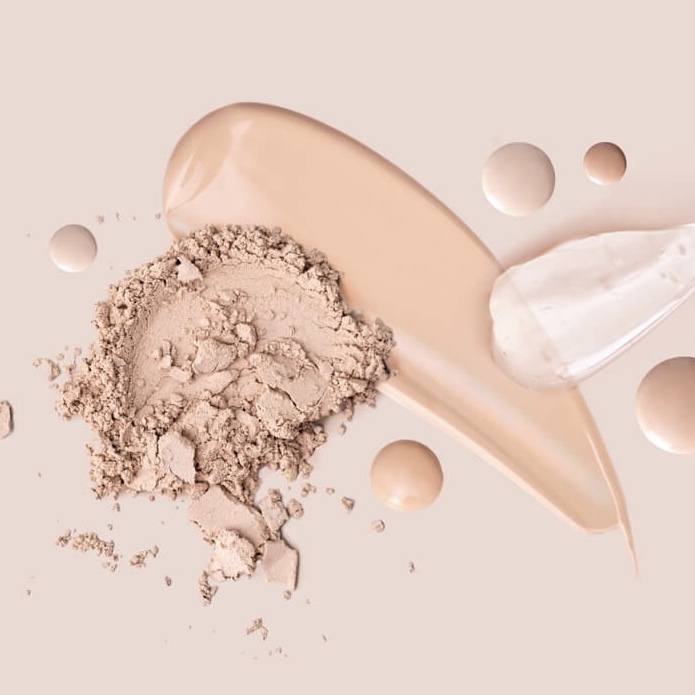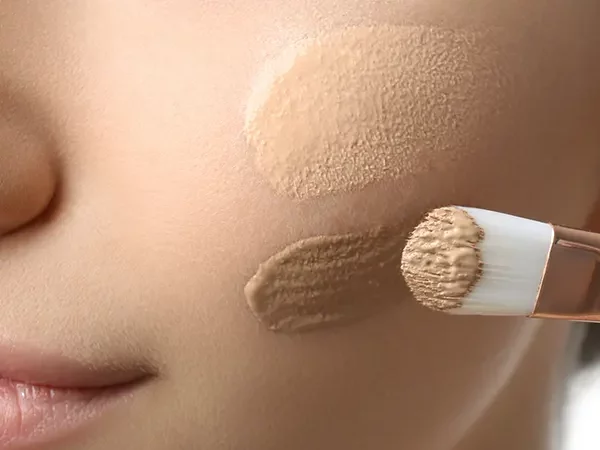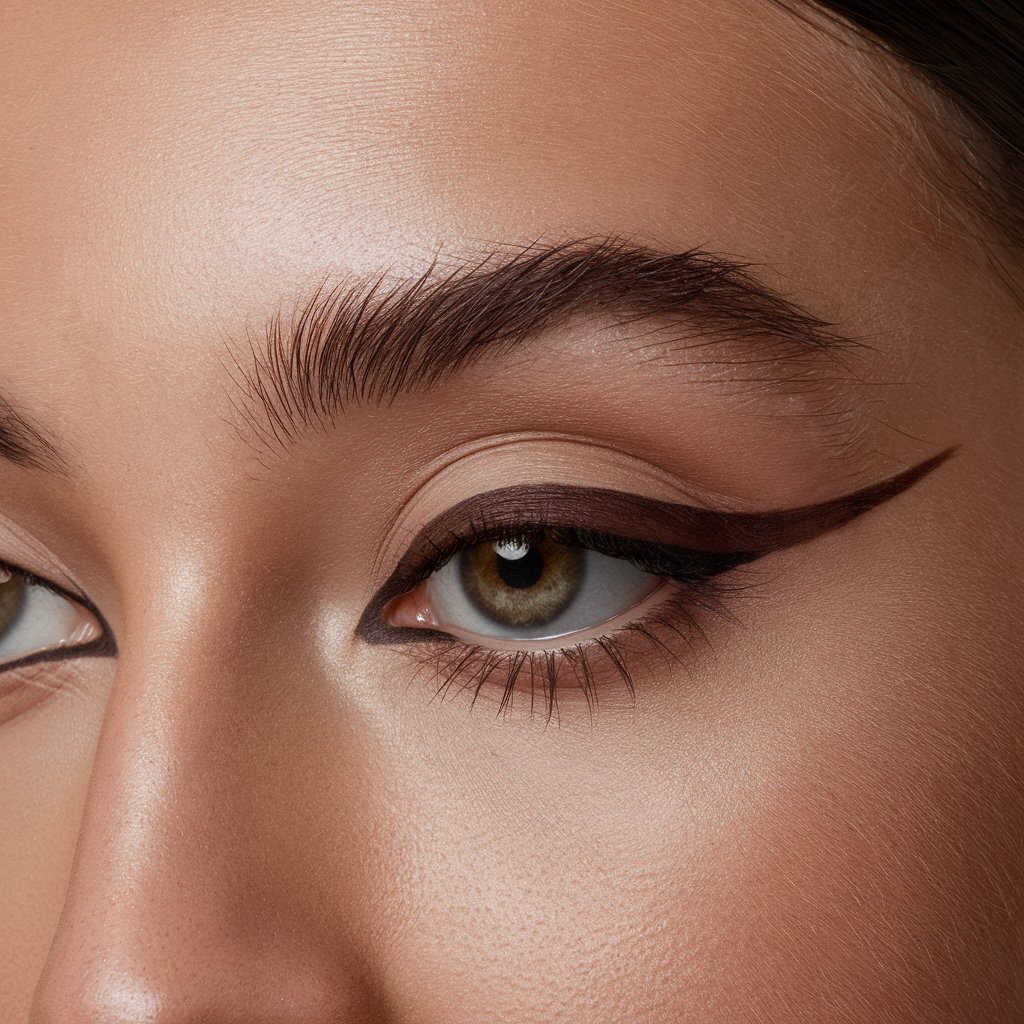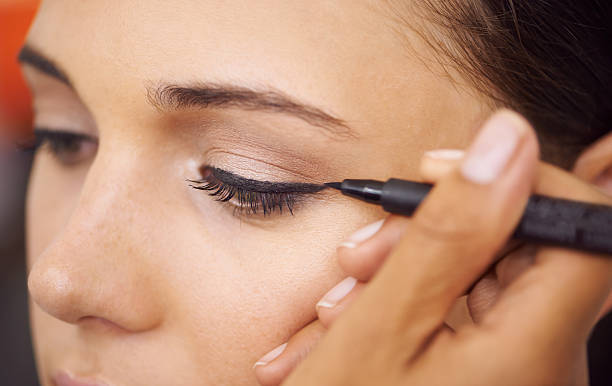In the vast realm of makeup artistry, one question has persistently stirred debate among enthusiasts and professionals alike: should you apply concealer or foundation first? This seemingly simple query unlocks a treasure trove of techniques, preferences, and expert tips. Whether you’re aiming for a flawless everyday look or prepping for a special occasion, the order of application can significantly impact the final result. Let’s delve into the intricacies of both approaches to help you master your makeup routine.
What’s the Difference Between Concealer and Foundation?

Concealer is a highly pigmented product used to camouflage specific imperfections like dark circles, blemishes, and discoloration, while foundation is a more sheer to full-coverage product meant to even out the skin tone and provide a base for the rest of the makeup. Essentially, concealer targets localized problem areas, while foundation provides overall coverage for the entire face.
When to Apply Foundation Before Concealer?
Applying foundation before concealer is generally the preferred method in makeup application for several reasons, but there are specific situations where this order becomes particularly important. Here are some scenarios where applying foundation before concealer is beneficial:
1. Evening Out Skin Tone
Foundation is designed to even out the skin tone and cover minor imperfections. Applying it first can reduce the amount of concealer needed, as foundation will already address some of the discoloration and blemishes.
2. Creating a Smooth Base
Foundation creates a smooth and even base, which allows the concealer to adhere better and blend more seamlessly. This can help prevent the concealer from looking cakey or patchy.
3. Better Coverage Control
When you apply foundation first, you can see exactly where you need additional coverage. This prevents you from using too much concealer, which can look heavy and unnatural.
4. Color Correction
If you have areas that need color correction, such as under-eye circles or redness, applying a thin layer of foundation first can neutralize the area, allowing you to use less color-correcting concealer.
How to Apply Foundation Before Concealer?
When applying foundation before concealer, the primary goal is to create an even base that minimizes the need for heavy concealing, leading to a more natural and blended look. Here’s a step-by-step guide to help you apply foundation and concealer effectively:

Step-By-Step Guide to Apply Foundation First
- Prep Your Skin: Start with a clean, moisturized face. Apply a primer suited to your skin type to ensure your makeup lasts longer and applies more smoothly.
- Apply Foundation:
- Choose a foundation that matches your skin tone.
- Use a brush, sponge, or your fingers to apply the foundation evenly across your face. Begin from the center and blend outwards.
- Cover the entire face, focusing on evening out your skin tone. This step will often reduce the amount of concealer you need.
- Conceal as Needed:
- After your foundation is blended and set, look for areas that still need extra coverage, such as dark circles, blemishes, or redness.
- Choose a concealer that matches your foundation or is one shade lighter.
- Apply the concealer in a small amount directly onto the areas that need extra coverage.
- Use a brush, sponge, or your fingertip to blend the concealer into the foundation seamlessly. Patting motions work best to blend without removing the underlying foundation.
- Set Your Makeup:
- To ensure your foundation and concealer last throughout the day, set them with a translucent powder. Use a light dusting to avoid a cakey appearance.
- For added longevity, you can also use a setting spray.
Tips
- Less is More: Avoid applying too much foundation or concealer at once. You can always add more if needed.
- Different Concealers for Different Issues: Use a color-correcting concealer for specific issues like green for redness or peach for dark circles before applying your skin-toned concealer.
- Blend, Blend, Blend: Ensure that there are no harsh lines between your foundation and concealer. This blending will help in achieving a natural look.
By following these steps, you’ll create a flawless base that looks natural and lasts throughout the day.
Benefits of Applying Foundation Before Concealer
The benefits of applying foundation before concealer are manifold, enhancing both the process and the final look.
- Uniform Base: Starting with foundation allows for a more uniform skin tone, which reduces the amount of concealer needed, preventing a cakey appearance.
- Enhanced Coverage: This method enables you to target specific areas with concealer, using it only where necessary, thus achieving a natural look.
- Blending Ease: Applying foundation first makes blending easier, as the foundation acts as a buffer, allowing the concealer to meld seamlessly into the skin.
- Longevity: This technique often results in a longer-lasting makeup application, as the layers are built up thoughtfully, ensuring better adherence and less slippage throughout the day.
When to Apply Concealer Before Foundation?
Applying concealer before foundation can be beneficial in specific situations:
1. Spot Concealing
When you need targeted coverage for blemishes or imperfections, applying concealer before foundation allows you to precisely cover those areas without disrupting the foundation’s even application.
2. Color Correction
If you’re using color correctors to neutralize specific skin concerns (like redness or dark circles), applying them before foundation helps to correct the discoloration before creating an even base with foundation.
How to Apply Concealer Before Foundation?
Applying concealer before foundation can be beneficial for addressing specific concerns like dark circles, redness, or blemishes, allowing for a more targeted approach. Here’s a step-by-step guide to help you apply concealer before foundation effectively:
Step-By-Step Guide to Apply Concealer First
- Prep Your Skin:
- Start with a clean, moisturized face.
- Apply a primer suitable for your skin type to ensure your makeup adheres well and lasts longer.
- Apply Concealer:
- Choose the Right Concealer: Use a concealer that addresses your specific concerns. For example, use a peach or orange-toned concealer for dark circles, green for redness, and a regular skin-toned concealer for blemishes.
- Apply Sparingly: Dab the concealer onto the areas that need coverage. Use a brush, sponge, or your fingertip to apply the product.
- Blend Thoroughly: Blend the concealer into your skin using patting motions. Ensure that the edges are seamlessly blended into your natural skin to avoid harsh lines.
- Apply Foundation:
- Choose the Right Foundation: Select a foundation that matches your skin tone.
- Application Method: Use a brush, sponge, or your fingers to apply the foundation. Start from the center of your face and blend outward.
- Blend Over Concealer: When applying foundation over the concealed areas, use gentle patting motions to avoid moving the concealer. Ensure that everything is blended well for a natural look.
- Set Your Makeup:
- Setting Powder: Lightly dust a translucent setting powder over your face to set the makeup and reduce shine. Focus on areas where you applied concealer to prevent it from creasing.
- Setting Spray: For extra longevity, finish with a setting spray.
Tips
- Correcting Concealers: Use color-correcting concealers to neutralize specific issues before applying your regular concealer.
- Buildable Coverage: If more coverage is needed, you can apply a second layer of concealer over the foundation, blending well to maintain a natural look.
- Less is More: Avoid over-applying concealer or foundation to prevent a cakey appearance.
By following these steps, you can effectively use concealer before foundation to create a flawless, even complexion that looks natural and lasts throughout the day.
Benefits of Applying Concealer Before Foundation
The method of applying concealer before foundation also brings several distinctive advantages to the makeup table.
- Precision Coverage: This technique allows for pinpoint accuracy in addressing skin issues, ensuring that problem areas receive the most attention.
- Layer Control: By concealing first, you can build coverage in layers, which can be particularly beneficial for problematic skin without overloading the face with product.
- Natural Finish: Applying foundation over concealer helps blend the edges of the concealer, resulting in a more natural, less detectable finish.
- Flexibility: This approach offers flexibility in terms of product choice, allowing for the use of heavier, more opaque concealers without the risk of a heavy overall appearance.
Conclusion
The decision of whether to apply concealer or foundation first ultimately hinges on your individual skin needs, makeup preferences, and desired finish. Both techniques offer unique advantages and can be expertly wielded to achieve flawless results. By understanding the nuances of each method, you can customize your routine to suit any occasion, ensuring that your makeup always enhances your natural beauty. Whether you opt for the uniform base of foundation-first or the precision of concealer-first, mastering these techniques will elevate your makeup application to professional levels, leaving you with a radiant, confident complexion.
















